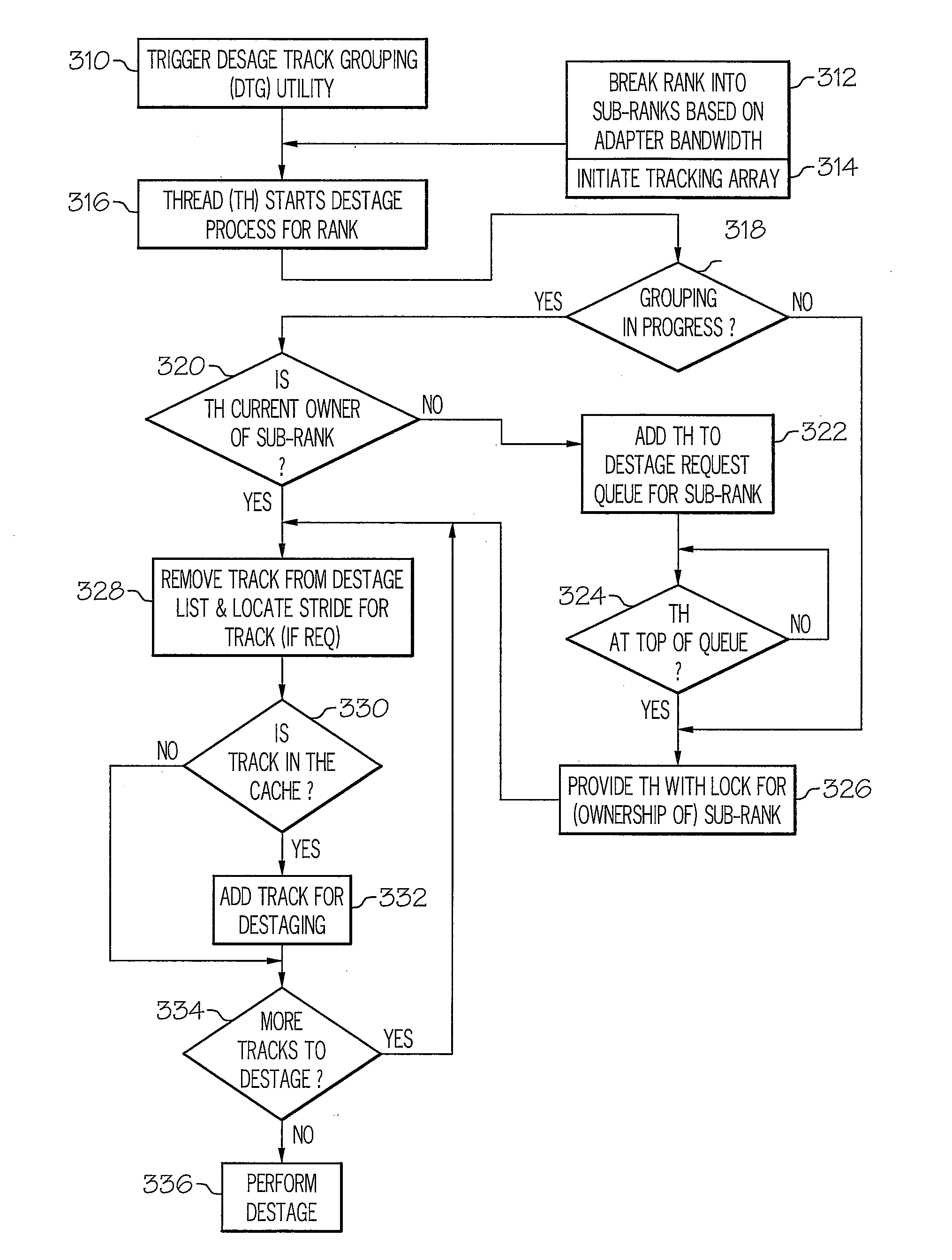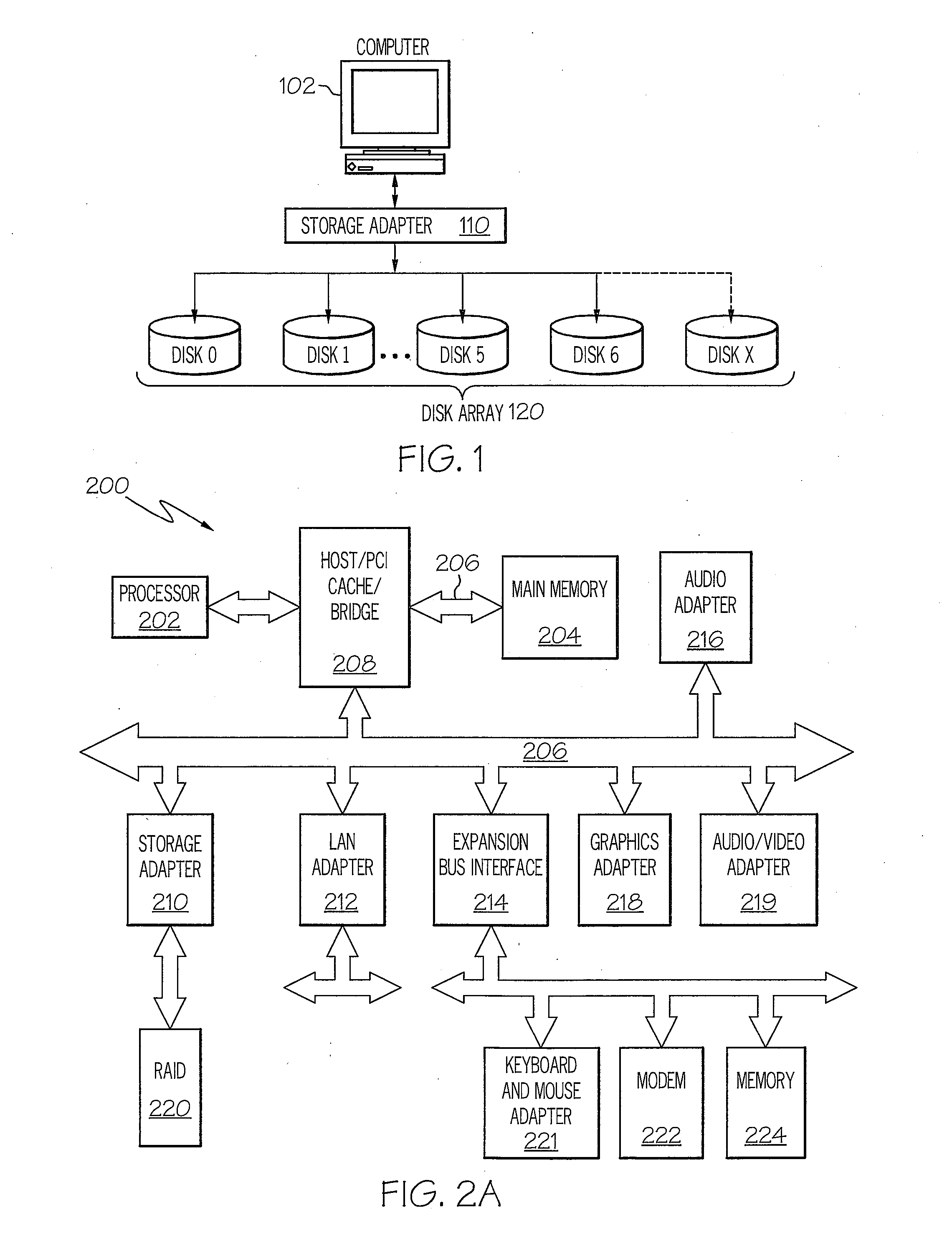Method and system for grouping tracks for destaging on raid arrays
a raid array and track technology, applied in the field of data storage systems, can solve the problems of partial stripe writes, latency of completing standard write operations across multiple disks, and write penalty (or latency) for maximizing full stripe writes, and achieve the effect of reducing the write penalty or latency
- Summary
- Abstract
- Description
- Claims
- Application Information
AI Technical Summary
Benefits of technology
Problems solved by technology
Method used
Image
Examples
Embodiment Construction
[0022]The present invention provides a method, system and processor for substantially reducing the write penalty (or latency) associated with writes and / or destaging operations within a RAID 5 array and / or RAID 6 array. When a write or destaging operation is initiated, i.e., when modified data is to be evicted from the cache, an existing data selection mechanism first selects the track of data to be evicted from the cache. The data selection mechanism then triggers a data track grouping (DTG) utility, which executes a thread to group data tracks, in order to maximize full stripe writes. Once the DTG algorithm completes the grouping of data tracks to complete a full stripe, a full-stripe write is performed, and parity is generated without requiring a read from the disk(s). In this manner, the write penalty is substantially reduced, and the overall write performance of the processor is significantly improved.
[0023]In one embodiment, each rank within the cache is broken into sub-ranks,...
PUM
 Login to View More
Login to View More Abstract
Description
Claims
Application Information
 Login to View More
Login to View More - R&D
- Intellectual Property
- Life Sciences
- Materials
- Tech Scout
- Unparalleled Data Quality
- Higher Quality Content
- 60% Fewer Hallucinations
Browse by: Latest US Patents, China's latest patents, Technical Efficacy Thesaurus, Application Domain, Technology Topic, Popular Technical Reports.
© 2025 PatSnap. All rights reserved.Legal|Privacy policy|Modern Slavery Act Transparency Statement|Sitemap|About US| Contact US: help@patsnap.com



